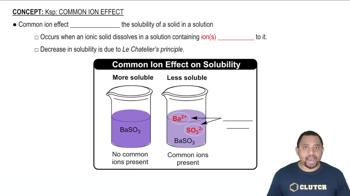Here are the essential concepts you must grasp in order to answer the question correctly.
Oxidation States
Oxidation states are a way to keep track of electrons in chemical compounds. They indicate the degree of oxidation of an atom in a molecule, helping to determine the charge of ions. In compounds, the sum of the oxidation states must equal the overall charge of the compound, which is crucial for assigning charges to anions.
Recommended video:
Common Anions
Common anions are negatively charged ions that frequently occur in chemical compounds. For example, the peroxide ion (O₂²⁻) is a common anion that consists of two oxygen atoms bonded together, carrying a -2 charge. Recognizing these common anions is essential for determining the charges in compounds containing oxygen.
Recommended video:
Ionic Compounds
Ionic compounds are formed from the electrostatic attraction between positively charged cations and negatively charged anions. The charges of the ions must balance to create a neutral compound. Understanding the nature of ionic bonding is key to assigning the correct charges to the anions in compounds like CsO₂ and BaO₂.
Recommended video:
 Verified step by step guidance
Verified step by step guidance

